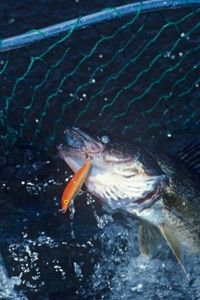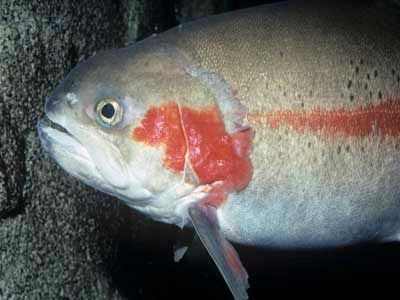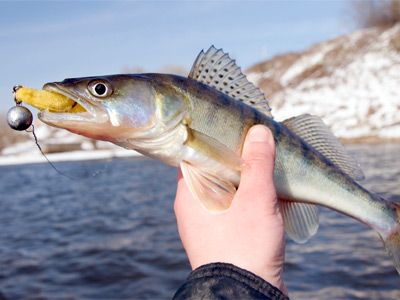To get a fish to bite, you need to know how, where, when, and what it eats.
Walleyes are most active in morning and evening. They feed on small yellow perch, trout, smallmouth bass, northern pike or sunfish; you can often find them around schools of these smaller fish. They eat a lot, they're aggressive, and they're not picky, which is good news for you. Because walleyes eat by sucking in water around their prey, you'll probably want to try smaller bait.
Advertisement
Look for walleyes around submerged rocks, weedy flats, bars or other underwater barriers in lakes or rivers. Many predators like such obstructions, which help them ambush their food. Walleyes locate their prey by sight, which means you're not likely to find them in sunny waters; they retreat coyly to the shadows or the darker depths, often in groups. Walleyes' strong vision also means you'll have better luck with brightly colored lures, and you might even want to experiment with different colors. [Source: Eggerston]
In the case of walleyes, to suss out the location, you'll also need to consider the time of year. Walleyes like water between 55 and 68 degrees Fahrenheit, and they move to follow it. In spring and fall, you'll find them in the shallows of lakes. In summer, they'll be a bit deeper -- though you're not likely to find them in very deep waters (more than 50 feet).
Now that you know those basics, let's find out how you can choose the right baits and lures.
Advertisement


